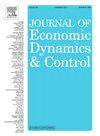与成本协同效应签约:连续时间双面道德风险
IF 1.9
3区 经济学
Q2 ECONOMICS
引用次数: 0
摘要
我们研究了两个具有成本协同效应的连续时间双面模型中的最优努力和报酬。在协同工作协同效应模型中,成本协同效应存在于两个持续努力的代理人之间:每个代理人的努力都会降低其同事的边际努力成本。代理人完全瓜分了项目的现金流。在最优合同中,生产率较高且对成本降低影响较大的代理可获得较大部分的现金流。在链式协同效应模型中,一个代理人付出初始努力启动项目,她的同事付出持续努力管理项目。前期努力降低了同事持续努力的边际成本。最佳付款时间反映了各代理之间的成本协同效应和努力时间:前期努力与早期支付相对应。我们的研究表明,成本协同效应的引入不仅改变了现金流的分配,还提高了预期社会盈余。这项研究表明,成本协同效应可以提高涉及团队的一系列契约问题的效率。本文章由计算机程序翻译,如有差异,请以英文原文为准。
Contracting with cost synergies: Continuous-time double-sided moral hazard
We study optimal effort and compensation in two continuous-time double-sided models with cost synergies. In the co-work synergy model, cost synergies exist between two agents with ongoing effort: each agent's effort reduces his colleague's marginal cost of effort. The agents completely divide the project's cash flow. In the optimal contract, the agent with higher productivity and a bigger cost-reduction influence claims a larger fraction of the cash flow. In the chain synergy model, one agent exerts initial effort to start the project, and her colleague exerts ongoing effort to manage it. The upfront effort reduces the marginal cost of her colleague's ongoing effort. The timing of optimal payments reflects cost synergies across agents and the timing of efforts: Upfront effort corresponds to early payments. We show that the introduction of cost synergies not only alters the allocation of the cash flow but also improves the expected social surplus. This study suggests that cost synergies increase efficiency for a broad set of contracting problems involving teams.
求助全文
通过发布文献求助,成功后即可免费获取论文全文。
去求助
来源期刊

Journal of Economic Dynamics & Control
ECONOMICS-
CiteScore
3.10
自引率
10.50%
发文量
199
期刊介绍:
The journal provides an outlet for publication of research concerning all theoretical and empirical aspects of economic dynamics and control as well as the development and use of computational methods in economics and finance. Contributions regarding computational methods may include, but are not restricted to, artificial intelligence, databases, decision support systems, genetic algorithms, modelling languages, neural networks, numerical algorithms for optimization, control and equilibria, parallel computing and qualitative reasoning.
 求助内容:
求助内容: 应助结果提醒方式:
应助结果提醒方式:


